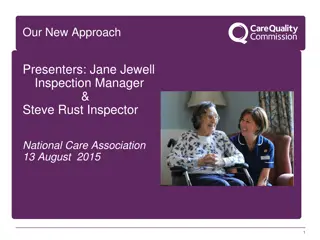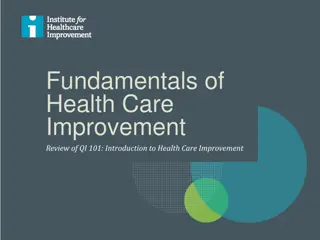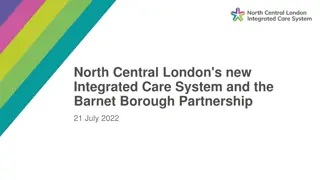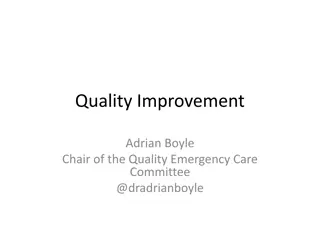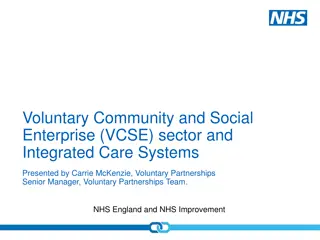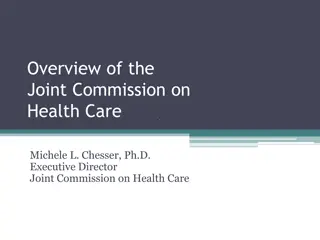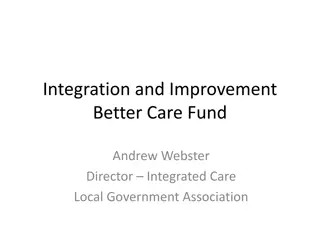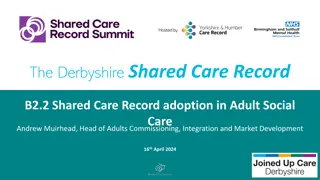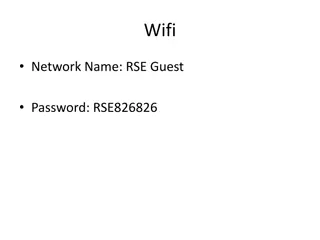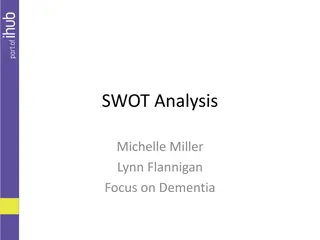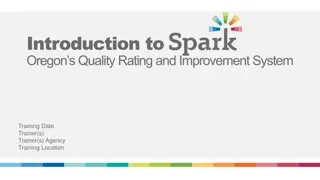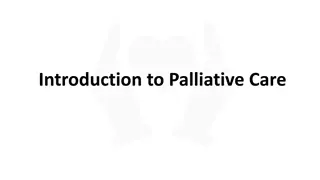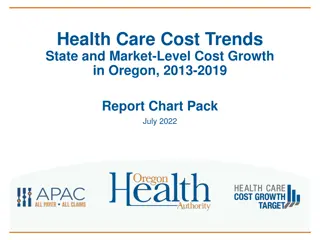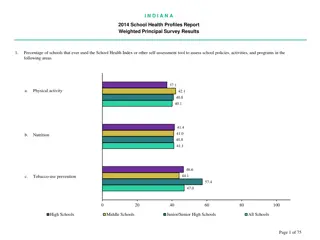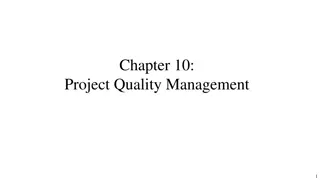Partnering for Quality Improvement in Health and Social Care Services
Ensuring safe, effective, and compassionate care in health and social services is crucial. The inspection process aims to maintain high-quality standards through paperless inspections and focused assessments for already rated services. Changes in reporting templates have made reports more concise and accessible, enhancing collaboration with providers and stakeholders.
Download Presentation

Please find below an Image/Link to download the presentation.
The content on the website is provided AS IS for your information and personal use only. It may not be sold, licensed, or shared on other websites without obtaining consent from the author. Download presentation by click this link. If you encounter any issues during the download, it is possible that the publisher has removed the file from their server.
E N D
Presentation Transcript
Working with partners for quality improvement Presenters Lindsay Furze and Catriona Eglinton Event Optimum Annual Conference Date 19 March 2019 1
Our purpose and role We make sure health and social care services provide people with safe, effective, compassionate, high-quality care and we encourage care services to improve Register Monitor and inspect Use legal powers Speak independently Encourage improvement People have a right to expect safe, good care from their health and social care services 2
Our inspection process The methodology for inspections remains the same We inspect based upon the Key Lines of Enquiry (KLOE). There were some changes to the KLOEs and ratings characteristics in 2017 and 2018 We look for good 3
We are moving towards paperless inspections, many inspectors will be taking notes on laptops and we may also take photographs of documents, equipment or the environment Full feedback will be given at end of inspection. A written or electronic copy will be provided. This may be shared with stakeholders. 4
Our inspection process Inspections for services already rated as good and outstanding, will be more focused on what we observe and what people tell us The purpose of these inspections is to re-affirm the rating Where we find information to suggest an improvement in rating or evidence of a decline in quality we will follow this up All outstanding reports go to a regional panel. Particular scrutiny is given to services that have increased more than one rating 5
Changes to reporting A new report template is now in use. This is shorter and more accessible. This has been created in collaboration with providers and stakeholders The report is now structured around a standard template of sub- headings and bullet points which correspond with the KLOEs The way we gather evidence is the same, but there will not be as much detail or repetition Providers will be offered the opportunity to have a discussion about the report with the lead inspector within two to four days of receiving the draft report. The purpose will be to clarify any aspects of the draft report This does not affect the factual accuracy process 6
Preparing for inspection Be inspection ready at all times we want to see how the service normally runs Reassure your staff, tell us if there is anything we can do to put your staff at ease Ensure you are familiar with the KLOEs Record any examples of good practice so that you can share these on inspection Remember we are looking for evidence of impact upon people 7
Formal contact with CQC Statutory notifications Notifications are vital to inform our risk monitoring Providers have a legal duty to notify us of key events and failing to notify is a potential offense and a rating limiter on inspection reports Notifications should be completed as thoroughly as possible, including detail of what was in place before, during and after any incident If you are unsure how/what to notify please do talk to us The Provider Information Return: The development work on this this has been paused. Registration changes: These are normally managed by our registration team the best place for advice is our national contact centre 8
Informal contact with CQC We encourage providers and managers to contact us if they have questions If you would like to update us about changes to your service then please do (for example: the registered manager is away for a short period and you are providing us with an alternative contact) If you would like to update us regarding general intelligence about your service, this is also really helpful. For example, a disgruntled ex- employee who has threatened to report concerns Please direct all informal enquiries to our national contact centre. They will record it and ensure it is passed to the correct inspector 9
Keep up to date Subscribe to receive our monthly bulletin: http://www.cqc.org.uk/content/get-our-newsletter Follow us on Twitter: @CQCProf Join our provider online community to share your views: www.cqc.org.uk/organisations-we-regulate/get-involved/join- our-online-communities-providers 10
Thank you www.cqc.org.uk enquiries@cqc.org.uk @CareQualityComm 11



